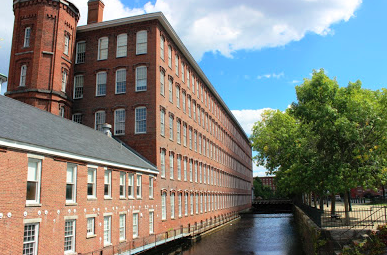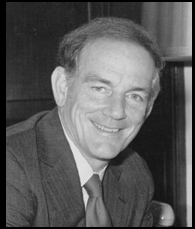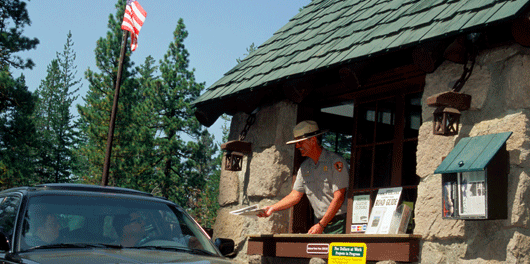To provide observations and information on the emerging fields of landscape scale conservation, heritage preservation, and sustainable community development.
Newsletter
Stay up-to-date with the latest nature, culture and community news.
We won’t spam you or share your information. Newsletters are sent approximately 10 times a year. Unsubscribe at any time.

Cultural Parks: What Happened?
In the late 1960s and 1970s, a number of communities hoped to gain federal designation as “National Cultural Parks.” In pursuing recognition as “cultural” rather than “historical” landscapes, park supporters sought to upend longstanding National Park Service norms that tended to prioritize fixity over change and the past over the present and possible future evolution of a site. In the end, however, the push for a cultural park category proved elusive with each place instead entering the NPS system under the Historical Park designation.

Behind the Scenes of the Legislative Process
For this month’s Featured Voice interview, we talk with Don Hellmann, the former Assistant Director for Legislative and Congressional Affairs for the National Park Service. Hellmann ended his 40-year career working with Congress at the beginning of 2017. He spent the last 22 years with the NPS. In the interview, Hellmann provides insight into how the NPS legislative agenda changed over time as well as background on especially memorable bills, including Public Law 104-333, which addressed the future of the Presidio of San Francisco.

From the Archives: Urban Recreation and Greenline Parks Capture Attention in 1975
The mid 1970s proved to be a pivotal moment in the history of large landscape conservation. The funding boom of the sixties had come to an end, but the political influence of the environmental movement still held sway in many state capitols and in Washington, D.C. The administration of President Gerald Ford sought to cut back on federal investments in conservation, especially in cities, while members of Congress pushed for increases or – at the very least – preservation of the funding status quo. A document from the era, drafted by Charles Little of the Congressional Research Service, captures these tensions and is worth a read.

Latest Updates: Federal Government and Large Landscapes
It is getting harder and harder to keep track of all the news involving federal government action on landscape conservation issues. The past few weeks have been especially overwhelming with each day (and sometimes each hour!) bringing a new headline or controversy. Drilling in Alaska, new fees at National Park Service units, and potential changes to National Monument designations are just a few of the issues to catch our attention.

Worlds End Celebrates 50th Anniversary
2017 marks the 50th anniversary of the acquisition of the World’s End property in Hingham, Massachusetts, by the nonprofit Trustees of Reservations. World’s End is one of more than 100 properties managed by the Trustees, an organization that dates to the late 19th century. Read more.

Cultural Parks: What Happened?
In the late 1960s and 1970s, a number of communities hoped to gain federal designation as “National Cultural Parks.” In pursuing recognition as “cultural” rather than “historical” landscapes, park supporters sought to upend longstanding National Park Service norms that tended to prioritize fixity over change and the past over the present and possible future evolution of a site. In the end, however, the push for a cultural park category proved elusive with each place instead entering the NPS system under the Historical Park designation.

Behind the Scenes of the Legislative Process
For this month’s Featured Voice interview, we talk with Don Hellmann, the former Assistant Director for Legislative and Congressional Affairs for the National Park Service. Hellmann ended his 40-year career working with Congress at the beginning of 2017. He spent the last 22 years with the NPS. In the interview, Hellmann provides insight into how the NPS legislative agenda changed over time as well as background on especially memorable bills, including Public Law 104-333, which addressed the future of the Presidio of San Francisco.

From the Archives: Urban Recreation and Greenline Parks Capture Attention in 1975
The mid 1970s proved to be a pivotal moment in the history of large landscape conservation. The funding boom of the sixties had come to an end, but the political influence of the environmental movement still held sway in many state capitols and in Washington, D.C. The administration of President Gerald Ford sought to cut back on federal investments in conservation, especially in cities, while members of Congress pushed for increases or – at the very least – preservation of the funding status quo. A document from the era, drafted by Charles Little of the Congressional Research Service, captures these tensions and is worth a read.

Latest Updates: Federal Government and Large Landscapes
It is getting harder and harder to keep track of all the news involving federal government action on landscape conservation issues. The past few weeks have been especially overwhelming with each day (and sometimes each hour!) bringing a new headline or controversy. Drilling in Alaska, new fees at National Park Service units, and potential changes to National Monument designations are just a few of the issues to catch our attention.

Worlds End Celebrates 50th Anniversary
2017 marks the 50th anniversary of the acquisition of the World’s End property in Hingham, Massachusetts, by the nonprofit Trustees of Reservations. World’s End is one of more than 100 properties managed by the Trustees, an organization that dates to the late 19th century. Read more.


